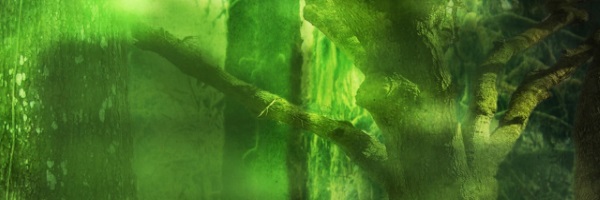One piece of advice given to writers is to create backstories for characters, even with no plan to use that backstory. In other words, an author might decide a character had a divorce or death in his or her past, but never bring it up in the book. That might seem like wasted effort, but it’s really not. What the author works at presenting is a damaged person, a person who has that past and is suffering in the present. It’s that suffering that the reader senses. It brings depth to characters.
I like to treat locations as though they are characters. I feel that giving a location a personality creates an atmosphere it would not have otherwise. In Curse of the Arrowheads, I knew I wanted the characters to go into the forest. I had my own sense of what the forest was like. I had a concept of its presence and its appearance. However, before I wrote the parts of the book that occurred within the forest, I created a bestiary of creatures that lived there.
The list ranged from simple and obvious things like squirrels, to more bizarre creations, like a skunk that screeches it warnings. Knowing my fantasy realm was a place other than our Earth, the possibilities were endless.
The challenge when drawing up such a list of creatures is keeping it close enough to reality that readers aren’t thrown off. However, beasts should still be different enough to suggest to the readers that they travel through a new land they have not visited before. Adding simple traits to known animals works well, such as a labeling a cat that lives in the forest a “tree cat.” The addition defines the animal as something different but does not involve extensive description. Just give the cat a nice pattern on its fur and decide its size and you have a new animal that fits the fantasy world and is believable to the reader.
After I wrote the list of creatures for my forest, I also decided what trees beyond the ordinary might grow there. Then, I chose a hierarchy of intelligent creatures or monsters in that environment. The exercise was a lot of fun. In the end, I had a new land with all the traits of a fantasy forest. Into that world, I sent my characters.
Did my characters run into all the creatures I’d created? They sure didn’t. Did they see the bear with the stripe down its back? Nope. Did they fight the arch villain of the forest? No, they didn’t. In fact, they never found out that that creature existed. Was a tree cat watching them from above while the characters walked under? Possibly.
While the characters never encountered those threats or wonders, they were there. The characters walked that land with the things that were beautiful and the things that would kill them. It was my goal that the micro universe I’d created, the one just beyond the words, would ooze between the lines. The book characters knew many of the dangers. Knowing that the characters knew, helped me to write about their caution with a deeper reality that I hoped would translated onto the page for readers.
Aside from being enjoyable and useful for that one book, the work is done and the forest now “exists.” Any future adventures there have a ready-made stage onto which to walk. Thanks to the exercise of invention, plenty of other stories ideas have risen into view. The only thing as fun as writing the current book, is planning the next ones!
Q: What would you put in your fantasy forest?

